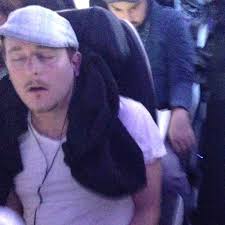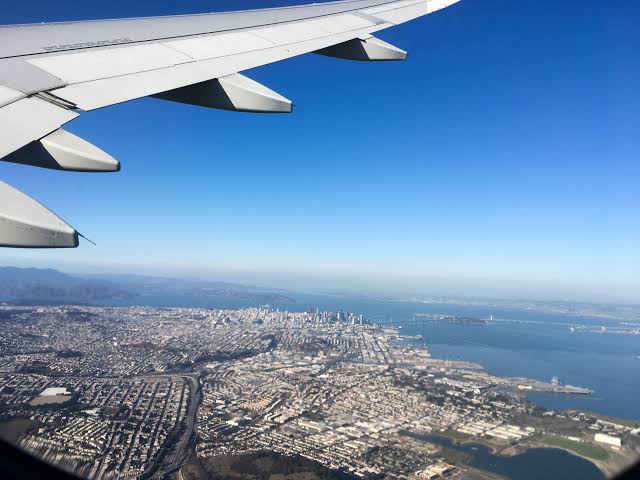A lot of people plan a holiday around an event……..or an event around a holiday. As they commence their travel their training goes out the window. Here is some advice and guidance around how to incorporate your training around your travel.
As I am based in New Zealand (along with about 50% of the athletes I coach) and although we have a number of great events here in that will tick off nearly any athletic goal but to get to any iconic international event (whether the New York marathon or Kona Ironman or something else) it requires New Zealanders to travel (often for more than 24 hours) to attend. Conversely if international athletes are traveling to NZ to attend any of our iconic events (from Challenge Wanaka, Queenstown Marathon or the Ironman 70.3 World Champs in Taupo this year) are also required to travel here.
I’m not going to cover planning for or how to get the best deal on your travel in this article but focusing on how to manage your training around this travel to get the most out of it.
Taper
It’s important that you continue to train rather than cease your training a week or more prior to the event. There is tapering but not training isn’t beneficial. The key to successful tapering is reducing the volume of your training, maintaining your intensity and increasing your recovery. Continue to train at the same frequency as you have, just not as long nor as strenuous.
I’m going to use an example of an athlete who is traveling from Nelson in New Zealand to do the London Marathon. With this being such a big distance to travel. Google maps tells me it’ll take 1 day and 4 hours, but who wants to spend that long in an aeroplane and transit lounges!!! Most people will break this up, so in this example the athlete is going via USA and will visit family, instead of going directly to the UK.
The London Marathon is being held on Sunday 26th of April. So with the itinerary they are arriving in London late on Thursday 23rd, giving them all of Friday and Saturday to prepare for the event. With the travel over they are departing NZ on Sunday 18th crossing the international dateline and arriving in the USA on the same day they left NZ (although when they arrive in the US on Sunday it’ll then be Monday in NZ). After spending some time with family in the US they pop across the pond to land in the UK. This is a great way to break up the journey and also spend some time with family.
One of the key considerations with planning training whilst travelling is what can you do in route. How long do you have each place? What can you do whilst there?
Last Sessions Prior To Departure
The process of stating to acclimate to your destination can start prior to actually departing. Whilst travelling you won’t get much of a chance to train, this means you’ll get a great chance to recover from your previous training.
I strongly recommend a hard training session before departing. This will assist with tiring you out to assist with getting to sleep on the plane. Hit it hard the morning of departure if you’ve got the chance. If you travel starts early, have a solid session the evening before departure.
Training Whilst Travelling
I know people who have done run sessions in airport terminals, it’s surprising how much time you can run for in major international airports. But I’d find that pretty boring and dodging people whilst running I can’t imagine isn’t much fun.
With long flights of greater than 4 hours duration I highly recommend completing a stretch session on the flight. At the very least it gets you out of your seat. I usually wait until everyone has settled into the flight at least 30 minutes into the flight or when everyone is sleeping for long haul.
I go to somewhere there is plenty of floor space, usually near the doors and spend a good 30 minutes stretching. Working through my whole body with a series of stretches. I hold each stretch for at least 30 seconds (nice and long – not rushed) and if there are any parts of my body that are tight I’ll also spend extra time stretching those muscles. I also like to do this in the departure lounge to help pass the time and assist with your recovery and preparation.
Minimising Jet Lag
The other thing to do whilst flying across time zones, is to set your watch to your destination time zone when you get on the plane and start living to that time zone. If you are crossing the date line or more than four time zones this will really provide you benefits when you land.

This means if it is time to go to bed at your destination then go to bed (regardless of what else other people on the plane are doing). Put some ear plugs in, put the eye mask on and do your best to get some sleep. How much sleep you get is not important (because lets be honest you aren’t going to get a quality sleep on the plane). What is important is that you are resting and not providing your brain with stimulation – either through electrical stimulation by watching some sort of screen or from noise coming into your ears.
When it’s time to be awake at your destination, do what you need to do to stay awake. Now is the time to provide your brain with both electrical stimulation by watching a screen and listening to something that requires concentration. Also get up and move around, eat etc.. as best you can to normalise the time zone of your destination.
Stay hydrated by consuming a reasonable amount of water and minimise consumption of alcohol whilst in transit.
This will minimise the effect of jet lag by meaning that you can start allowing your body to start to acclimate to the new time zone before you even arrive.
Adjusting To Your New Time Zone
Exercise and recovery is key to setting a rhythm in your new times zone and exposure to sunlight and fresh air also assist. Now let me clarify what I mean by fresh air….I’d like to think that every city in the world has air quality similar to what I enjoy in the hills around Nelson in New Zealand. Now I know London isn’t going to give this athlete that, BUT getting outside and exercising in the outdoors is far better to assist your body prepare for the new location than it will stuck in a hotel gym with air con. The key is to get outside and exercise as soon as practical in your destination.
If you are arriving at a reasonable time of day, conducting a short session on arrival will help establish your body clock in the new time zone. If you get exposure to sunlight in this session even better. The melatonin release from this sunshine will also help with adjusting your body clock. Not wearing sunglasses will assist with this too.
If however you arrive quiet late, skip the training and get a good sleep and then get up and exercise first thing the next morning.
Example
| Date | Training | Event |
| Fri 17-Apr-20 | Stretch session as scheduled (or if going for a run on the morning isn’t practical Stead 50min Run) | |
| Sat 18-Apr-20 | Steady 50min Run before departure (if practical) & 30min Stretch session conducted a few times on the flights | Depart NZ |
| Sat 18-Apr-20 | 30min Stretch session conducted a few times on the flights & a 30min Easy Run on arrival in USA (if arriving at accommodation before 6pm) | Arrive USA |
| Sun 19-Apr-20 | 1:30hr long run | |
| Mon 20-Apr-20 | Stretch Session | |
| Tue 21-Apr-20 | 4x 6min Treshold Intervals | |
| Wed 22-Apr-20 | Stride Out session either before departure or on arrival depending on what suits best | Flight to UK |
| Thu 23-Apr-20 | 45min Steady Run | |
| Fri 24-Apr-20 | Stretch Session | |
| Sat 25-Apr-20 | Easy 30min Run | |
| Sun 26-Apr-20 | London Marathon | |
| Mon 27-Apr-20 | 30min Recovery Run |
If you’ve got a question about training, fill in the form and I’ll give you the benefit of my experience and knowledge:
